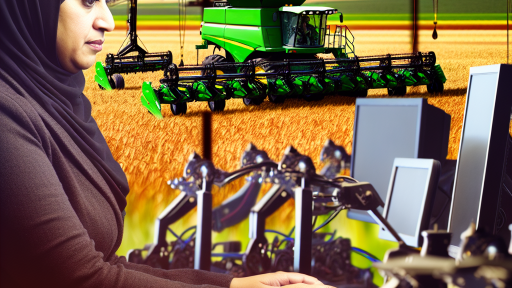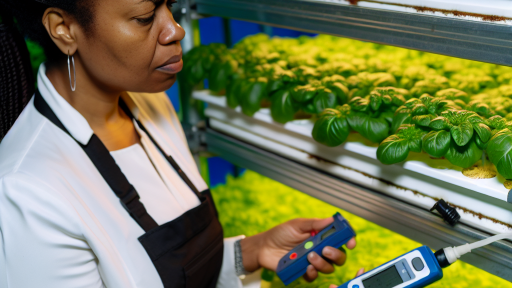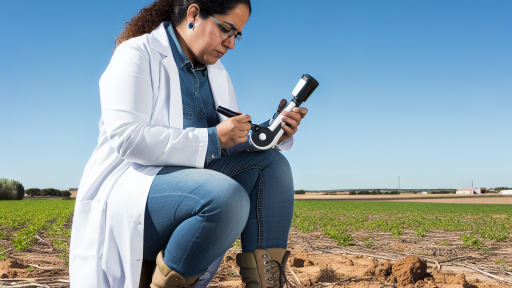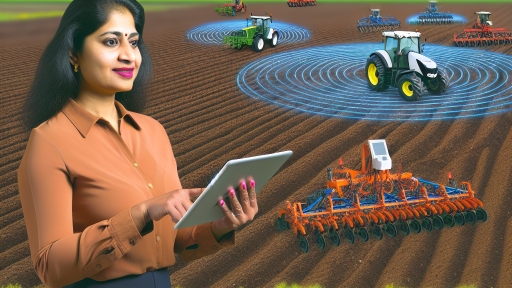Introduction to Automated Machinery in Irrigation
Automated machinery revolutionizes irrigation systems in agriculture.
This technology minimizes human intervention while maximizing efficiency.
Farmers increasingly rely on smart irrigation solutions.
Automation enables precise water application tailored to plant needs.
This method conserves water and reduces waste significantly.
Advantages of Automated Irrigation Systems
Automated systems offer numerous benefits to farmers.
First, they improve the consistency of water supply.
Second, these systems enhance crop yield and quality.
Additionally, they reduce labor costs by streamlining operations.
Lastly, they enable data-driven decision-making for optimal performance.
Key Technologies in Automated Irrigation
Several technologies underpin effective automated irrigation systems.
Soil moisture sensors provide real-time data on soil conditions.
Smart controllers adjust irrigation schedules based on weather forecasts.
This ensures crops receive the right amount of water at the right time.
Furthermore, remote monitoring allows farmers to manage systems efficiently.
Transform Your Agribusiness
Unlock your farm's potential with expert advice tailored to your needs. Get actionable steps that drive real results.
Get StartedImplementation Challenges
Despite their benefits, automated irrigation systems face challenges.
Initial costs can deter some farmers from adopting this technology.
Technical knowledge is crucial for effective system management.
Moreover, integration with existing farming infrastructure can be complex.
Farmers must weigh these challenges against long-term advantages.
Future Trends in Automated Irrigation
The future of automated irrigation holds exciting possibilities.
Advancements in artificial intelligence enhance irrigation strategies.
These innovations promise even greater efficiency and resource management.
Additionally, sustainable practices will play a pivotal role in development.
Farmers will increasingly adopt renewable energy sources for operations.
Types of Automated Irrigation Systems
Drip Irrigation
Drip irrigation delivers water directly to the plant roots.
This method minimizes water waste effectively.
It uses a network of tubing and emitters for precise watering.
Farmers can program systems for automatic schedules.
Moreover, drip irrigation reduces weed growth by targeting specific areas.
Sprinkler Irrigation
Sprinkler systems mimic natural rainfall.
This method distributes water through a network of pipes.
Sprinklers can cover large areas efficiently.
They can be mounted on wheeled carts or fixed in one place.
Adjustable nozzles allow for varied spray patterns and distances.
Soaker Hoses
Soaker hoses provide slow, deep watering to the soil.
They are perfect for rows of plants and gardens.
The porous material allows water to seep out slowly.
This method encourages deep root growth.
Showcase Your Farming Business
Publish your professional farming services profile on our blog for a one-time fee of $200 and reach a dedicated audience of farmers and agribusiness owners.
Publish Your ProfileSoaker hoses are easy to set up and can be left in place.
Automatic Timers and Sensors
Automatic timers control when irrigation systems operate.
These devices can be set to specific days and times.
Sensors can detect moisture levels in the soil.
They adjust watering schedules based on real-time conditions.
As a result, systems prevent overwatering or underwatering.
Smart Irrigation Systems
Smart irrigation combines technology with traditional methods.
These systems analyze weather patterns and conditions.
They optimize water usage based on data collected.
Farmers can monitor systems remotely using smartphones.
This innovation enhances water conservation efforts.
Benefits of Automation in Irrigation Efficiency
Increased Water Conservation
Automated irrigation systems deliver water precisely where needed.
This targeted approach reduces water wastage significantly.
As a result, farmers conserve more water for future use.
Optimized Crop Health
Automation ensures consistent watering schedules for crops.
This consistency promotes healthy plant growth and resilience.
Moreover, it minimizes the risk of overwatering or underwatering.
Cost Efficiency Over Time
While initial investments may seem high, automation pays off.
Farmers can reduce labor costs through automated systems.
Additionally, these systems minimize the need for excess resources.
Real-Time Monitoring and Control
Advanced systems allow for real-time monitoring of soil moisture.
This data enables farmers to make informed irrigation decisions.
Consequently, crops receive just the right amount of water.
Enhanced Flexibility
Automated irrigation systems adapt to changing environmental conditions.
Farmers can modify watering schedules quickly and easily.
This flexibility is essential during unpredictable weather patterns.
Gain More Insights: Automated Machinery for Pest Control Strategies
Key Technologies Driving Automated Irrigation
Sensors and IoT
Sensors play a pivotal role in automated irrigation systems.
They collect real-time data about soil moisture levels and weather conditions.
This data helps farmers make informed decisions about irrigation needs.
Moreover, advanced sensors can detect the specific needs of crops.
As a result, farmers can optimize water usage efficiently.
IoT technology further enhances these capabilities.
IoT connects sensors to a centralized system for data analysis.
This integration allows for remote monitoring and control.
Consequently, farmers can operate irrigation systems from anywhere.
They can adjust schedules based on precise data insights.
For instance, systems may automatically trigger irrigation after rainfall.
This automation minimizes water waste and promotes sustainability.
In addition, cloud computing plays a significant role.
Showcase Your Farming Business
Publish your professional farming services profile on our blog for a one-time fee of $200 and reach a dedicated audience of farmers and agribusiness owners.
Publish Your ProfileIt stores and processes large amounts of agricultural data.
Farmers can access historical patterns to predict future irrigation needs.
Implementing such technologies leads to more resilient agricultural practices.
Furthermore, data analytics can improve yield predictions.
This further solidifies the importance of automation in farming.
The combination of sensors and IoT creates a smart irrigation ecosystem.
This ecosystem not only saves water but also boosts crop production.
See Related Content: Integrating Robotics Into Traditional Farming
Case Studies: Successful Implementation of Automated Systems
Agricultural Innovations in California
In California, Green Valley Farms adopted automated irrigation technology.
This innovation led to significant water savings.
Moreover, it improved crop yields dramatically.
Farmers installed soil moisture sensors linked to an automated system.
As a result, irrigation occurs efficiently based on real-time data.
This strategy reduced water waste by 30%.
Success Story from Texas
Farmland Ranch in Texas implemented a smart irrigation solution.
The system utilizes weather forecasts to adjust watering schedules.
This approach proactively manages water resources effectively.
Consequently, the ranch observed a 25% decrease in water usage.
Furthermore, crop health and production increased substantially.
Innovation in Spain
In Spain, EcoFarm introduced automated drip irrigation systems.
This technology minimizes water evaporation and runoff.
Farmers benefit from targeted watering methods for each plant type.
Ultimately, they reported a 40% increase in water efficiency.
This case highlighted the relevance of using smart technology worldwide.
Community Initiatives in India
A village in India embraced automated irrigation to combat drought.
This initiative involved local farmers working together.
The shared system uses rainwater harvesting techniques efficiently.
Moreover, it incorporates solar-powered pumps for sustainability.
As a result, the community experienced enhanced food security.
Gain More Insights: Efficient Irrigation Solutions by Agri Services International in Lake Wales
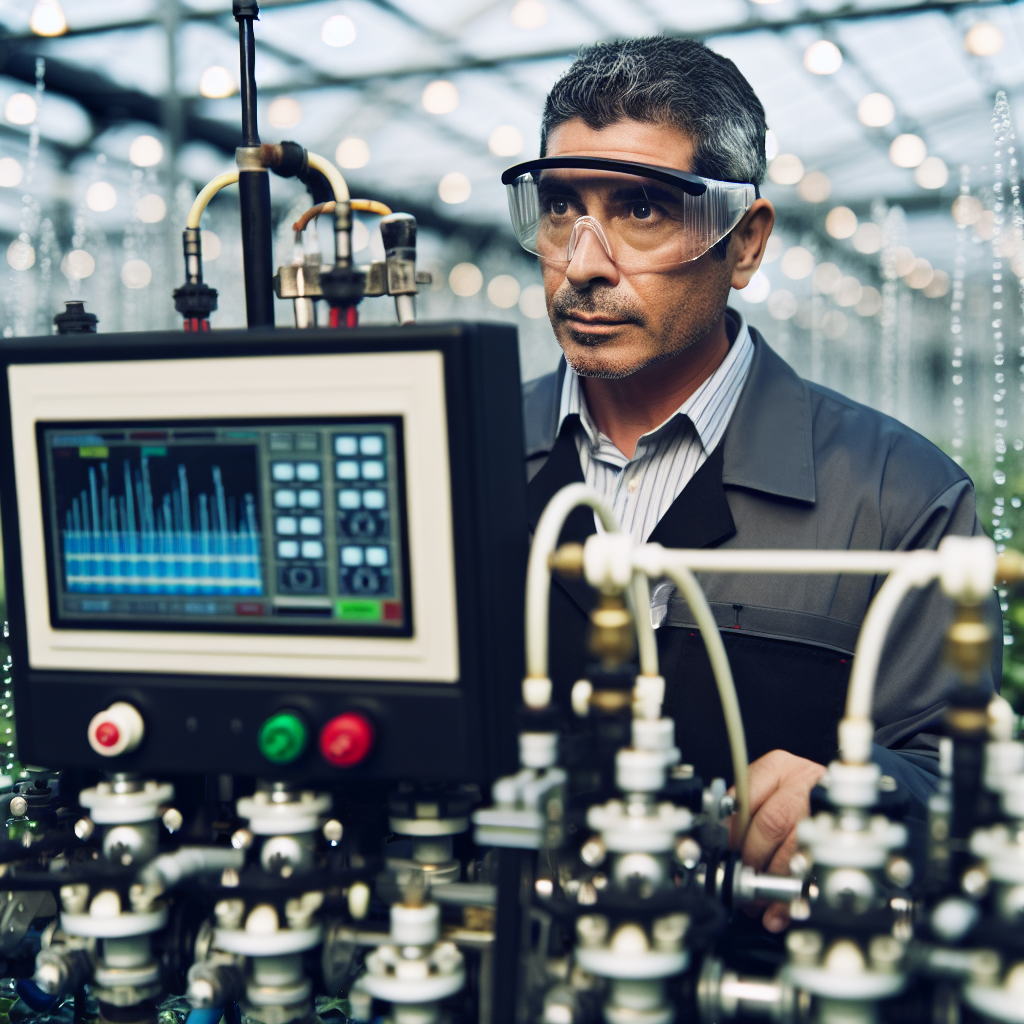
Challenges and Limitations of Automated Irrigation Machinery
Initial Costs
Automated irrigation systems require significant upfront investment.
This can be a barrier for many farmers and small agricultural enterprises.
High costs may discourage adoption of advanced technologies.
Investing in automation often requires financial support or loans.
Technical Complexity
Many farmers lack the technical expertise to operate automated systems.
Training is necessary to effectively utilize these technologies.
Without proper training, equipment may underperform or fail.
Consequently, ongoing technical support is crucial for success.
Dependence on Technology
Automated systems are heavily dependent on technology and power sources.
Any malfunction can disrupt water supply and harm crops.
Showcase Your Farming Business
Publish your professional farming services profile on our blog for a one-time fee of $200 and reach a dedicated audience of farmers and agribusiness owners.
Publish Your ProfileA reliable power source is essential for continuous operation.
Farmers must prepare for potential outages or equipment failures.
Market Accessibility
Not all farmers have access to advanced irrigation technologies.
Regional disparities can limit adoption rates.
This creates inequalities in agricultural productivity between regions.
Efforts should focus on improving access and distribution of technology.
Environmental Concerns
Automated irrigation can lead to overuse of water resources.
This may exacerbate regional water scarcity issues.
Furthermore, improper system management can harm soil health.
Farmers must implement sustainable practices alongside automation.
Limited Adaptability
Some systems may not adapt well to varying crop types and climates.
This can restrict operational efficiency and crop yield.
Farmers might require multiple systems for diverse planting environments.
Customization options could help enhance overall effectiveness.
Uncover the Details: Automated Machinery for Planting and Harvesting
Future Trends in Automated Irrigation Technology
Integration of IoT and Smart Sensors
The Internet of Things (IoT) revolutionizes automated irrigation systems.
Smart sensors monitor soil moisture and weather conditions in real-time.
As a result, they optimize water usage efficiently.
Farmers can remotely control irrigation systems via mobile apps.
Consequently, this enhances convenience and reduces labor costs.
Advanced Data Analytics
Data analytics plays a crucial role in future irrigation technologies.
It allows farmers to make informed decisions based on historical data.
Predictive analytics can forecast water needs using climate patterns.
Additionally, it helps in identifying potential irrigation issues early.
This proactive approach minimizes waste and maximizes productivity.
Sustainability and Water Conservation
Sustainable techniques will dominate future irrigation practices.
Automation reduces water wastage by delivering precise irrigation amounts.
Rainwater harvesting systems will integrate seamlessly with automated setups.
This approach promotes responsible water usage in agriculture.
Moreover, these systems can adapt to variable environmental conditions.
Use of Renewable Energy Sources
Renewable energy will power more automated irrigation systems.
Solar panels can provide sustainable energy for pumps and sensors.
This shift reduces reliance on fossil fuels and lowers operational costs.
Furthermore, energy-efficient systems will appeal to eco-conscious farmers.
Such innovations contribute positively to the agricultural ecosystem.
Customization and Flexibility
Future automated irrigation systems will offer greater customization.
Farmers can choose specific features tailored to their needs.
For example, drip irrigation setups can adjust based on crop types.
This flexibility improves the efficiency of various irrigation methods.
Consequently, it enhances overall crop yield and quality.
Showcase Your Farming Business
Publish your professional farming services profile on our blog for a one-time fee of $200 and reach a dedicated audience of farmers and agribusiness owners.
Publish Your ProfileBest Practices for Integrating Automated Machinery into Existing Systems
Assessing Current System Efficiency
Begin by evaluating your existing irrigation setup.
Identify areas that require improvement or upgrades.
Use data analytics to gather insights on water usage.
Talk to agricultural experts to understand best practices.
Choosing the Right Technology
Select automated systems that meet your specific needs.
Consider options like smart controllers and sensors.
Research compatibility with current irrigation methods.
Engage with vendors to test different automation tools.
Planning Integration Steps
Develop a clear roadmap for integration.
Allocate resources and budget for implementation.
Involve relevant stakeholders in the planning process.
Establish timelines for each integration phase.
Implementation and Testing
Execute the integration according to your roadmap.
Monitor progress to ensure adherence to timelines.
Conduct thorough testing of the new systems.
Evaluate performance and troubleshoot issues promptly.
Training Staff
Provide training sessions for all relevant personnel.
Focus on operational procedures and system maintenance.
Encourage staff to provide feedback on new technology.
Regularly update training materials as systems evolve.
Reviewing and Optimizing Performance
Set up regular reviews of system performance.
Analyze water usage data to identify trends.
Make adjustments as necessary to maximize efficiency.
Stay informed about advancements in irrigation technology.

